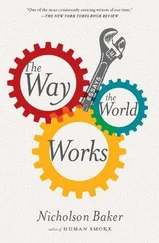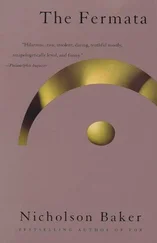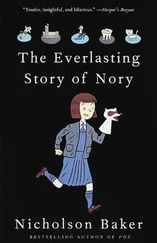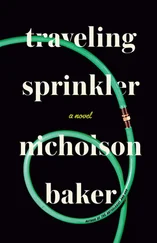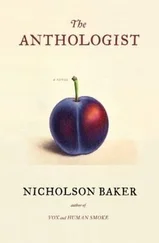And yet this was clearly a usable book: I was using it, and not gently, either. I don’t cover books with plastic sleeves; I pile them on the floor around my chair, and sometimes the piles topple. Any manual procedure that would conclude that my book was “unusable” or “unserviceable” was a flawed procedure. Klaus Hendriks was right, I thought — the existing tests are inadequate. To test a toaster you toast with it, to test a circuit board you run it for a burn-in period, to test tires you drive them on a test track, to test a heart muscle you put its owner on a treadmill. Suddenly something came to me: a new test for paper.
You don’t have to be a scientist or a conservator to perform my “Turn Endurance Test,” and it’s nondestructive. The protocol is as follows. Open a book to a middle page. Lift the top of the page a little with your right forefinger. Now, when you’re ready, turn the page, as if you had just read it. Then, with your left hand, restore the page you just turned to its initial position. Turn the page, turn it back; turn the page, turn it back. Each turn cycle may be called one double turn, or DT.
I performed a full-scale Turn Endurance Test on page 153 of Gosse’s Questions at Issue, the very page that had acquitted itself so poorly in a regulation fold test. I turned the page 2once… and nothing happened. The paper did not crack, disintegrate, or compromise itself in any way. Again I turned — and the paper was sound. I turned the page ten times — then twenty, then fifty. Each time, I let it return all the way to a point of rest on the right-hand page-block, so that in lifting it for the next cycle I would duplicate all the top-edge stresses of normal use. Each round trip took me about two seconds.
After two hundred turns, I began to enjoy myself. It wasn’t tedious; I got good at it. At the beginning of each cycle, the title of Gosse’s next essay disclosed itself on the page beneath: “Is Verse in Danger?” (Gosse believes that it is.) I looked down at the lower corner I’d broken off and regretted that I’d done it, and yet if that lost corner indirectly saves a few books it will not have been creased in vain. 3
After four hundred double turns I stopped. Barrow claimed that the test for fold endurance simulated the to-and-fro bending of a leaf in actual use — but that can’t be right, since my fold-failing page 153 had just flexed eight hundred times (at two bends per cycle) with no hint of damage. Its top edge, where my fingerprint ridges caught and curled it back slightly each time to initiate the turn, was unmarked. Questions at Issue was (by definition) a very brittle book, if you compared it with brand-new paper, or old rag paper, but my ten minutes of research indicated that I would be able to read it four hundred times, which was plenty. There is, then, a broad infrared spectrum of serviceable frailty below “breaks at one-half fold” that the act of folding simply cannot sense. In the early sixties, Barrow once took a reporter 4for the Richmond News Leader down to his lab:
“See,” he said, taking a yellowed book off a shelf of yellowed books. It was an old cookbook. “Printed in 1905,” he said, as page 282 came out in his fingers. We folded the paper over, then back. Two folds were all the paper could take. The page fell into two pieces, and the recipe for Chicken a la Terrapin was cut in half.
The reporter was shocked, but we needn’t be. If Barrow hadn’t chosen to destroy yet another page in order to perform his parlor trick, the recipe for Chicken à la Terrapin would very likely be with us today. (And it would be an interesting recipe, too: a terrapin is a large freshwater turtle.)
One root of the word “duplicity” is duplicitas, “double-foldedness.” The fold test, as it has been institutionalized in research libraries, is often an instrument of deception, almost always of self-deception. It creates a uniform class of condemnable objects—“brittle material,” or better yet, embrittled material (for somehow the em-prefix adds a further wiggle of worry) — whose population can be adjusted up or down to suit rhetorical needs simply by altering the number of repetitions demanded in the procedure. It takes no intelligence or experience to fold a corner, and yet the action radiates an air of judicious connoisseurship. Because it is so undiscriminatingly inclusive, and cheap, and quantifiable — because it can be tuned to tell administrators precisely what they want to hear — the fold test has become an easy way for libraries to free up shelves with a clear conscience. It isn’t that we’d like more space, one can almost hear them whispering to themselves, as they work the corners back and forth, it’s that the books are, sadly, doomed.
CHAPTER 19. Great Magnitude
The eighties became the decade of the Barrow-inspired statistical-deterioration survey. Stanford University 1set the pattern in 1979 by subjecting the corners of four hundred books to three double folds ( three, followed by a gentle pull, just to be sure), with additional demerits for bad bindings, crumbly margins, and poor paper color — they found that twenty-six percent of the books had “deteriorated.” In 1984, the Library of Congress cut strips from the fore-edges of twelve hundred of its books and mounted them on MIT Fold Testers; a statistical consultant found that twenty-five percent had fold values of less than one, meaning that “in the judgement of experienced 2Library of Congress personnel in the preservation field” (i.e., Peter Sparks and his crew), these books “should be preserved by microfilming rather than deacidification.”
And then in 1985, in the pages of College and Research Libraries, came a monster from New Haven. It was called “The Yale Survey: 3A Large-Scale Study of Book Deterioration in the Yale University Library.” A team of interns (salaried by the National Endowment for the Humanities and the Mellon Foundation) performed double-fold tests on an incredible 36,500 books. The corners were to be “folded four times, and the crease pinched on each fold,” an appendix confides— pinched, just to be sure. “Of the books surveyed in the main Sterling [Memorial Library] stacks, 44.7 percent did not survive the four-fold paper test — a percentage that represents between 1,351,600 and 1,420,420 books.” What were we to conclude from these huge numbers? “These findings signal the need for expanded replacement and reproduction programs”—more microfilming. The current preservation librarian at Harvard, Jan Merrill-Oldham, was one of the team of dedicated folders.
The Yale survey was executed with care and thoroughness, and it’s worth studying. If we look at its results in a slightly different way, they argue for the astonishing fortitude of acidic paper, not for its endangeredness. A few years before the publication of the survey, Gay Walker, Yale’s head of preservation, delivered a paper to preservation administrators that described the environmental conditions in the Sterling stacks. There were, she said, “major problems with the ventilation system.” There was no air-conditioning, and humidity levels in the summer were extremely high. Worse than that, heating problems raised wintertime stack temperatures into the nineties and dropped the humidity to ten or fifteen percent. “Water leaks occurred 4from time to time and a pigeon’s nest with eggs could be found now and then on the upper floors,” Walker informed her colleagues. “It seemed that the Sterling stack tower was purposefully built to serve as a giant aging oven — planned deterioration indeed!”
And yet, according to the survey report (which doesn’t spell out these environmental rigors), even after decades of being dry-baked, summer-steamed, leaked on, bird-nested, and even occasionally read, the Yale collection wasn’t doing too badly: “Surprisingly, the percentage of books needing immediate treatment was much lower than we had believed,” the surveyors candidly admit. Their advance guess was that thirty or forty percent of Yale’s books would need attention, but that proved, they wrote, to be an overestimate — an overestimate, that is, unless the surveyors redefined the needing-attention category “to include all books with brittle paper” (those, in other words, that failed their mystical manipulation), whether the books actually needed attention or not. Without the fold test, Yale had no marketable preservation crisis.
Читать дальше



